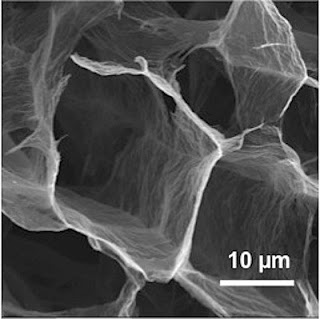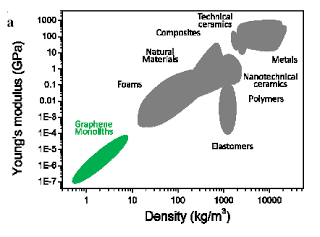

| Visitors Now: | |
| Total Visits: | |
| Total Stories: |

| Story Views | |
| Now: | |
| Last Hour: | |
| Last 24 Hours: | |
| Total: | |
3D cork-like structures created from graphene
From
Monash University researchers have established, for the first time, an effective way of forming graphene, which normally exists in very thin layers, into useful three-dimensional (3D) forms by mirroring the structure of cork.
Graphene is formed when graphite is broken down into layers one atom thick. In this form, it is very strong, chemically stable and an excellent conductor of electricity. It has a wide range of potential applications, from batteries that are able to recharge in a matter of seconds, to biological tissue scaffolds for use in organ transplant and even regeneration.
Professor Li, from the Department of Materials Engineering, said previous research had focused mainly on the intrinsic properties and applications of the individual sheets, while his team tackled the challenge of engineering the sheets into macroscopically-useable 3D structures.
“When the atomic graphene sheets are assembled together to form 3D structures, they normally end up with porous monoliths that are brittle and perform poorly,” Professor Li said.
Scanning electron microscope image of cork-like cellular graphene monolith, magnified 2000 times. Credit: Ling Qiu
The graphene monoliths show much lower density then other conventional materials.
Nature Communications – Biomimetic superelastic graphene-based cellular monoliths
See more and subscribe to NextBigFuture at 2012-12-07 16:22:26 Source: http://nextbigfuture.com/2012/12/3d-cork-like-structures-created-from.html
Source:




